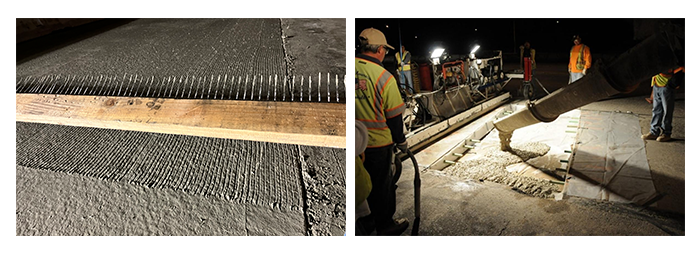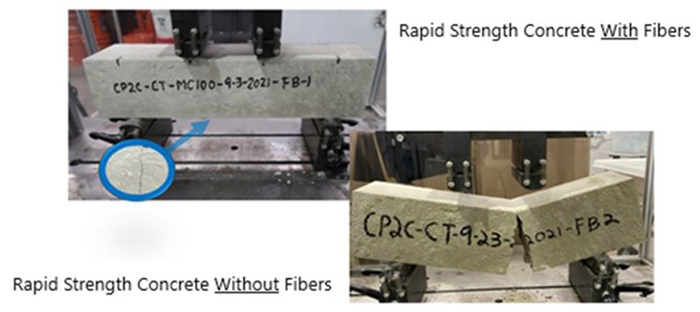Asphalt, concrete slabs in midst of upgrades

Division of Maintenance photo
Emissions cut by use of reclaimed material for pavement work; pilot programs bear down on cracking
Caltrans is incorporating the use of reclaimed asphalt pavement in more of its projects statewide. Reclaimed asphalt pavement (RAP) is removed or reprocessed pavement materials that when used in asphalt pavements are known to reduce planet-warming pollution associated with the mining and transportation of aggregate, crude oil extraction and the refining and transportation of asphalt binders.
The department started including recycled pavements in its projects in 2009 when 15 percent RAP was allowed as part of the conventional asphalt mixes. Caltrans has built thousands of lane miles of good-performing asphalt pavement using RAP and in 2013, increased the percentage used to 25 percent.
In 2021 Caltrans, along with the industry, developed non-standard specification procedures (NSSP) to increase the maximum RAP content to 40 percent in conventional asphalt mixes. Since existing mix design procedures were deemed inadequate in designing mixes with 40 percent RAP, the specifications outline innovative mix design procedures that utilize performance-related tests.

Division of Maintenance photos
The NSSP has been included in six pilot projects statewide to evaluate the performance of asphalt pavement containing up to 40 percent RAP designed using the new procedures. Three of the projects, located in Districts 2, 8 and 10, have been constructed, with the remaining projects, in Districts 2, 4 and 7, expected to be completed this year.
Caltrans, in partnership with the University of California Pavement Research Center, is collecting and analyzing the data from these pilot projects. If the new procedures and resulting asphalt pavements perform well, the NSSP can be used statewide.
Slab replacement breakthrough?
Meanwhile, the Division of Maintenance has embarked upon a series of new pilot projects to test a new solution that could be the key to cutting down on cracking in Rapid Strength Concrete (RSC) slab pavement. Caltrans uses RSC in slab replacement projects to minimize traffic closures by addressing only the damaged areas of the state highway system, instead of replacing the entire stretch. Think of it as fixing a few broken tiles in your bathroom instead of redoing the whole floor.
RSC is a type of concrete that gains strength high enough for Caltrans to open a road to traffic only a few hours after installing it without losing necessary durability and longevity, making it a cost-effective option of the department. RSC is generally considered a limited-term fix because it only has a service life of five to 10 years, however, cracking sometimes shows up in the early stages of service life due to improper mix proportioning, insufficient strength development, or a high rate of shrinkage.
To fix this problem, Caltrans conducted a laboratory study to investigate the potential benefits of using synthetic fibers in RSC to mitigate early cracking failures. The study showed that, when properly proportioned and mixed, the use of fibers in RSC improved the cracking resistance. According to the study, fiber-reinforced RSC (F-RSC) had high residual strength even after initial cracking as the fibers prevented the crack from opening and spreading, while plain RSC had no residual strength once cracked.

Division of Maintenance photos
Three pilot projects are currently underway in Los Angeles, Yolo and Ventura Counties to investigate the field applicability of F-RSC in slab replacement projects. If the pilots are successful, the use of fibers in RSC will expectantly reduce the chance of premature failures, ensuring that the RSC slabs will remain in good condition during the intended design life and improve the overall performance of the concrete pavement.
Sources: Kee Foo, Office of Asphalt Pavements; Reimond Garcia and S. David Lim, Office of Concrete Pavements; and Kerstin Tomlinson, Office of Strategic Management – all Division of Maintenance

